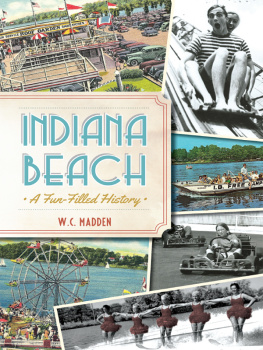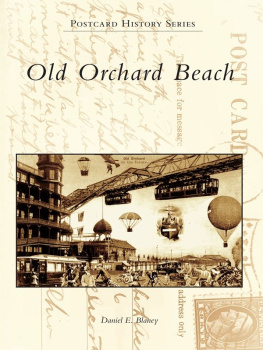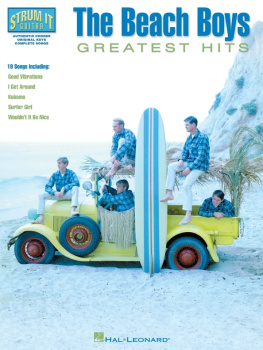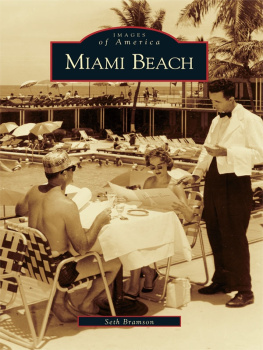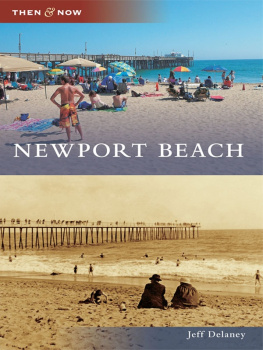

Published by The History Press
Charleston, SC 29403
www.historypress.net
Copyright 2014 by W.C. Madden
All rights reserved
Cover photos courtesy of Indiana Beach and Ruth Spackman Davis.
All internal images are courtesy of Indiana Beach unless otherwise noted.
First published 2014
e-book edition 2014
ISBN 978.1.62584.782.9
Library of Congress Cataloging-in-Publication Data
Madden, W. C.
Indiana Beach : a fun-filled history / W.C. Madden.
pages cm
Includes bibliographical references and index.
print edition ISBN 978-1-62619-297-3
1. Indiana Beach (Monticello, Ind.)--History. I. Title.
GV1853.3.I62I536 2014
791.06877293--dc23
2014003553
Notice: The information in this book is true and complete to the best of our knowledge. It is offered without guarantee on the part of the author or The History Press. The author and The History Press disclaim all liability in connection with the use of this book.
All rights reserved. No part of this book may be reproduced or transmitted in any form whatsoever without prior written permission from the publisher except in the case of brief quotations embodied in critical articles and reviews.
CONTENTS
ACKNOWLEDGEMENTS
When I was contacted by The History Press to write this book, I already had plans to write it six months before but I hadnt started on the project, so their timing was perfect. However, I had other things on my plate, so I had to put it to the side until November 2013, and the deadline was the end of the year. This didnt deter me, and I dedicated myself to finishing it on time, thanks to the help of some people like the Spackman family. Unfortunately, the elder Tom Spackman suffered a stroke in early November and passed away before I could speak with him. However, his children spoke for him and granted me interviews. They also helped me gather photos for the book.
Thanks to all the people who gave me interviews for this book. They were very helpful in my understanding of the park and what it means to people.
I would like to thank the White County Historical Society and the Monticello-Union Township Library for the vertical files they kept on Indiana Beach. Those files are helpful to a researcher like me and saved me time in the process. I would also like to thank the staff of the White County Records Department for digging through their old files and providing me some research information.
Thanks to Dorothy Salvo Davis for providing the information on the paranormal visit to Indiana Beach. And I appreciate the research help I received from Sabrina Gravely.
I would be remiss if I didnt thank my wife for helping me finish this book by doing things I would normally help her with at Christmastime. She also helped by editing my work before it was sent to the publisher.
INTRODUCTION
While many businesses begin in a basement or a garage, Indiana Beach started simply as a place to swim or rent a rowboat. Then it became a place where people could also dance and listen to orchestras. Then permanent rides were added, and it became like a carnival with a beach and a ballroom. Then roller coasters were built, and it became what it is today, a medium-sized amusement and water park with slides, rides, a zip line and much more.
What began as a place owned by an entrepreneur that was handed down to his son and eventually run by his family is now owned by a corporation and run by more than one thousand employees. What began as Ideal Beach, drawing a few thousand people a summer, is now Indiana Beach and draws nearly one million people a year.
This book captures the eighty-eight-year history of this Midwest amusement park.
Chapter 1
IDEAL BEACH
1920s
The roots of Indiana Beach date back to 1921, when construction began on the Norway Dam on the Tippecanoe River. When construction was completed in June 1923, Shafer Lake was formed. This allowed for the development of property surrounding the lake for summer cottages and homes to enjoy lake activities, like swimming, boating and fishing.
Earl W. Spackman, a distributor for the Ideal Furnace Company in Indianapolis, wanted a place for his family to get away from the big city. He wanted to be by the water. When he lived in Detroit, he owned a boat that he would use on the Detroit River. Earl heard about a new development on a lake two hours north of the state capital. He came to Monticello and was shown the new development by Thomas W. OConnor, the former mayor of the little city. The lots along the lake had seventy-five feet of lakefront. He picked out a lot on the west side of Shafer Lake in the Untalulti Cottage Addition about two miles from the city. Untalulti is an Indian word meaning lodge by the lake. Spackman had a cottage constructed and started taking his family to the lake during the summer for some relaxation.
The unusual thing about the property was that there were no outhouses. Everything was modern, with indoor plumbing. Also, people would stop at his place and ask him if there was any place for swimming on the lake. There was none. This gave Earl an idea. The bank that had started the development got into financial trouble and could no longer keep its building promises. Earl could lease some property from the bank in order to help it out, but he lacked the funds. He asked his company if it would lease some land and hed make a beach out of it. His company obliged with one condition: name the beach after the company. He agreed to name it Ideal Beach. That was the beginning of what would eventually become Indiana Beach.

Rowboats were one of the first attractions at Ideal Beach. In the background of this postcard are the toboggan, bathhouse and first pier.
When the water was lowered in Shafer Lake in September 1925 to fill Freeman Lake, where Oakdale Dam had been constructed, Earl took the occasion to have gravel brought in by mule teams to lay down a base for his beach on top of the mud that was once a cornfield. The gravel was spread manually, using shovels and two-by-four pieces of wood. Then he brought in tons of sand for the beach. When the lake filled back up, he had his man-made beach. Next, he constructed a bathhouse, a pier, a picnic pavilion and a small refreshment stand. Earl spent about $5,000 (about $64,000 today) on the improvements. For the rest of the decade, Ideal Beach was used for swimming and rowing boats.
When everything was ready, Spackman opened Ideal Beach on June 16, 1926, a Wednesday. We had ten row boats, a pop stand, and a place to change your clothes, said Tom Spackman, who worked at the refreshment stand at the time, on the television show Across Indiana. He was twelve years old at the time. A pavilion was also constructed for picnics and a pier for fishing. The new beach charged $0.10 (about $1.32 today) to use the beach (children under six were free). The bathhouse had forty private rooms and charged $0.15 for children under twelve, $0.25 for teens and $0.40 for adults. Everyone who came to the beach was charged $0.10 if they came in their own bathing suits. No one was permitted to change clothes in their cars or toilets.

Next page
